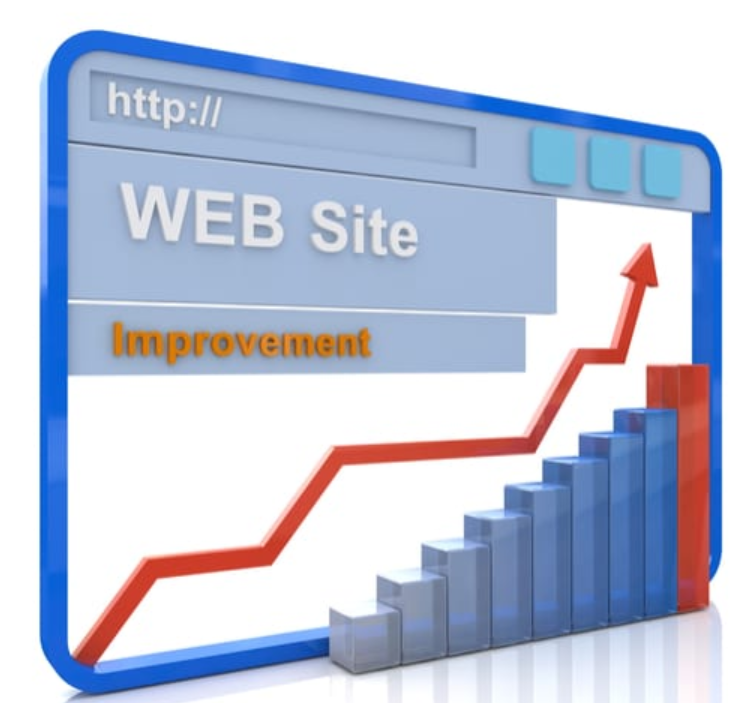7 Website Mistakes That Could Be Slowing Down Your Success
Your website is your digital storefront—and just like any physical space, it requires consistent upkeep and optimization. Even if you’ve invested in a beautifully designed website, chances are there are still hidden performance issues preventing it from reaching its full potential. Whether you’re losing traffic, struggling with slow load times, or not converting visitors into customers, minor problems can lead to major losses.
At Ravens Digital, we specialize in professional web development and optimization services, helping businesses in Missouri and across the U.S. turn their websites into high-performing, lead-generating machines. In this guide, we’ll walk you through the most common website issues that may be holding your business back—and how you can fix them.
Why Ongoing Website Improvement is Key to Your Web Maintenance Strategy.
Your website isn’t a one-time build. The digital landscape is always changing: search engine algorithms are updated, user behavior shifts, design trends evolve, and new technologies emerge. What worked well a year ago might now be hurting your site’s performance.
Constant website improvement is crucial for a few key reasons:
- User Expectations Are Always Evolving: People expect fast, responsive, and user-friendly websites. A site that feels outdated or sluggish can drive visitors away in seconds.
- SEO Requirements Are Fluid: Search engines like Google constantly update their ranking algorithms. Regular audits and improvements keep your site in compliance and competitive.
- Technical Issues Can Arise Without Warning: Broken links, outdated plugins, or compatibility issues can surface unexpectedly and harm your site’s reputation or functionality.
- Security Risks Are Increasing: Cyber threats evolve rapidly, so keeping your website secure with regular updates is non-negotiable.
- Conversion Optimization Is a Journey, Not a Destination: Even if you’re getting traffic, are you converting that traffic into leads or customers? Tweaking elements like copy, design, and CTAs based on performance data is essential.
In short, website maintenance and improvement should be part of your long-term digital strategy, not an occasional task.

7 Website Issues Harming Your Performance & Conversions
Let’s break down the 7 most common website problems that could be costing you performance, traffic, and conversions.
1. Slow Page Load Speeds That Frustrate Visitors and Impact SEO
Page speed is a critical performance factor. Google has stated that site speed (and as of Core Web Vitals, page experience metrics) is a direct ranking factor. But even beyond SEO, users are impatient—if your website takes more than 3 seconds to load, you could be losing over 50% of your visitors.
Causes of slow load speeds:
- Large, unoptimized images or video files
- Bloated code or excessive plugins
- Poor-quality hosting
- Unused JavaScript or CSS
Solution: Use tools like Google PageSpeed Insights or GTmetrix to identify performance bottlenecks. Compress media, reduce plugins, and consider upgrading to a faster hosting solution.
2. Mobile Responsiveness Problems That Hurt User Experience on Phones and Tablets
Over 60% of web traffic now comes from mobile devices, so if your website isn’t responsive, you’re likely driving away a significant portion of your audience. A responsive website dynamically adapts its layout and functionality to fit various screen sizes.
Common signs of poor mobile design:
- Elements that don’t resize properly
- Menus that are hard to tap
- Text that’s too small to read
- Content that overflows off the screen
Solution: Use responsive design frameworks and test your site on multiple devices. Tools like BrowserStack or Google’s Mobile-Friendly Test can help you identify issues.
3. Unclear Navigation and Layout That Confuses Site Visitors
If visitors can’t find what they’re looking for within seconds, they’ll leave. A poorly structured website with confusing menus or hidden pages leads to high bounce rates and low conversions.
Signs of poor navigation:
- Too many menu items
- No clear hierarchy or page structure
- Missing search functionality
- Inconsistent layout across pages
Solution: Implement a clean, intuitive navigation structure with clear labeling. Group related pages together and include a simple search bar to enhance UX.
4. Outdated Content or Inaccurate Information That Damages Credibility
Your website must dynamically reflect your most current offerings, company news, and industry insights. Outdated or irrelevant content will make your brand appear inactive and unprofessional, eroding visitor confidence.
Problem areas:
- Old blog posts or news updates
- Outdated service descriptions
- Inactive contact info or broken forms
- Missing product or pricing updates
Solution: Regularly audit your content. Update pages with fresh data, repurpose older blog posts with new insights, and ensure contact forms or call-to-actions are functional.
5. Weak SEO Foundations That Limit Your Website’s Visibility on Search Engines
Without a solid SEO structure, your site won’t rank—even if it looks great. If your meta titles, descriptions, alt tags, and heading structures are missing or poorly written, you’re limiting your reach.
Common SEO issues:
- Missing or duplicate meta tags
- Non-optimized URLs
- Broken internal or external links
- No keyword strategy
Solution: Conduct a full SEO audit using tools like SEMrush, Ahrefs, or Screaming Frog. Ensure all on-page elements are optimized and consistent with your keyword goals.
6. Weak Call-to-Actions (CTAs) That Fail to Guide the User Journey
Even with great content, your website needs to guide visitors toward a specific goal. CTAs like “Get a Quote,” “Schedule a Consultation,” or “Download Our eBook” are crucial. Without them, visitors won’t take the next step.
Problems with CTAs:
- Too subtle or hard to find
- Poorly worded or generic (“Click Here”)
- Not placed strategically
Solution: Use action-driven language, make CTAs visually distinct, and position them logically across the site—especially on landing pages, service pages, and blog posts.
7. Lack of Analytics and Goal Tracking That Leaves You Blind to What’s Working
If you’re not tracking how people interact with your website, you’re flying blind. Google Analytics, Hotjar, and other tools can give you insights into visitor behavior, conversions, and drop-off points.
Common issues:
- No goal tracking set up in analytics
- No heatmaps or click tracking
- Not measuring form submissions or call clicks
Solution: Set clear KPIs and use analytics to track them. Monitor bounce rates, session duration, conversion funnels, and form performance. This data will help you make smarter website improvement decisions.

How To Define Your Website Goals & Stay On Track With Long-Term Improvement
Before you can truly improve your website, you need to define what success looks like.
Start With These Key Website Goals:
- Lead Generation: Are you collecting emails, phone numbers, or quote requests?
- Sales or Conversions: Is your site helping to close sales or book consultations?
- Brand Awareness: Does your website reflect your brand authority and build trust?
- Content Engagement: Are users reading your blog, downloading eBooks, or watching videos?
- SEO Performance: Are you ranking for key terms in your niche or local area?
- Once you define your goals, map out a strategy:
- Set KPIs: Assign measurable targets (e.g., increase form submissions by 25%).
- Audit Regularly: Review analytics and technical SEO reports monthly or quarterly.
- Iterate Constantly: Use A/B testing and performance reviews to optimize design, content, and navigation.
- Partner With Experts: Agencies like Ravens Digital can help you manage and improve your web performance professionally and proactively.
Website Improvement Takeaways: How to Keep Your Site Optimized for Success
Let’s recap the key takeaways from this guide on website improvement:
✅ Website improvement is not optional—it’s ongoing. Regular updates and optimizations keep your site competitive, secure, and user-friendly.
✅ Small problems can cause big losses. Don’t ignore issues like slow load speeds, poor mobile design, or outdated content.
✅ Data-driven decisions matter. Use analytics and SEO tools to identify what’s working and what needs improvement.
✅ User experience is everything. Clean navigation, responsive design, and fast load times directly impact how people perceive your brand.
✅ Professional help can accelerate results. At Ravens Digital, we help businesses in Missouri and beyond maximize their online potential with tailored website strategies and development services.
Ready to Improve Your Website Performance?
Whether you’re looking to fix critical performance issues, redesign your site, or optimize for better conversions, Ravens Digital is your trusted partner in professional web development and strategic website improvement.
📞 Get in touch with us today to schedule a free website audit and consultation. Let’s turn your website into a powerful tool for growth.

Leave a Reply